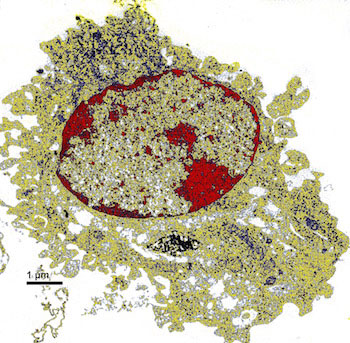Canada's Boundary Dam is getting promising results on carbon capture, but success is hardly a guarantee for similar projects.
The Boundary Dam project in Saskatchewan, Canada, rehabbed an old coal power unit with carbon capture and storage technology.
On a chilly, open plain in Saskatchewan, clean coal is getting its first big trial. The Boundary Dam power plant fired up last October, promising to generate enough electricity for 100,000 homes while capturing and reusing most of the heat-trapping carbon dioxide from its exhaust.
The world is watching. Since most of its electricity comes from fossil fuels, proponents say carbon capture and storage (CCS) technology like Boundary Dam's could be critical in heading off the worst effects of climate change. Can the $1.1 billion Canadian project prove them right?
The results so far are promising, but by no means final. Boundary Dam extracts 90 percent of the carbon from its smokestacks, then injects it into nearby oil wells to goose output. So far, it has captured 400,000 metric tons of carbon dioxide, according to its operator, SaskPower.
When it's at full throttle by the end of this year, that number will go up to one million metric tons annually, SaskPower says—the same as taking more than 200,000 cars off the road. Its emissions would then be about one third that of a comparable new natural gas plant.
SaskPower president and CEO Mike Marsh was upbeat about the plant at an energy conference last week in Washington, D.C., but acknowledged it was still undergoing "a lot of fine-tuning."
Boundary Dam is one of just 14 CCS projects operating worldwide, and the only one attached to a power plant. Another big project, Southern Company's Kemper County Energy Facility in Mississippi, is running more than two years late and $4 billion-plus over budget. The Sierra Club, which sued to stop Kemper,
called the plant "dirty, expensive, and unnecessary."
"Did we take on some risk? Absolutely," says SaskPower's Mike Marsh of the $1.1 billion project.
PHOTOGRAPH VIA SASKPOWER CCS
Both Kemper and Boundary Dam rely on lignite, or brown coal, a lower grade fuel especially common in Germany and China, and both will use the carbon from processing that coal to extend the life of oil wells nearby.
Anyone concerned about the climate might ask: Why funnel those billions into extending our dependence on fossil fuels?
"Eliminating coal is a great bumper sticker as a pragmatic climate change option," Thompson says. "It fails miserably.”
"The average person, they think CCS is about coal. It's not," Thompson says, noting that the technology can be used on plants both new and old, coal- or gas-fueled, and also at the many industrial sources of emissions. "You can't replace a steel mill with a windmill."
Unlike the Kemper project, which involves building a new coal gasification plant with different carbon capture technology, Boundary Dam* was a retrofit of a decades-old unit that would have had to close under new regulations Canada passed in 2012
"Did we take on some risk? Absolutely," Marsh says of the decision to go with CCS, which SaskPower made before the new Canadian rules were final. The alternative would have been to shut the plant and repower it with natural gas. Marsh says that CCS gave the company certainty it would meet the pending federal standard while avoiding the risk of higher natural gas prices in the future.
SaskPower's situation with Boundary Dam was unique—too unique, says
Howard Herzog, a senior research engineer at the MIT Energy Initiative who focuses on CCS. For carbon capture technology to really take off, he says, countries need to require bigger pollution cuts while also providing the same kinds of financial incentives that renewables have received.
"It all comes down to economics, it’s very simple," Herzog says. "The markets aren’t there for CCS.” The Department of Energy included significant tax credits for carbon capture in its 2016 budget proposal, which he says would spur more projects, but it's unclear whether those will be approved.
Low oil and natural gas prices aren't helping CCS either, particularly in the U.S.: It makes less sense now to pour carbon into mature wells than it did when oil prices hovered near $100 a barrel. Plus, many states can meet pending emissions goals by ramping up natural gas and renewables.
Herzog believes that UN-led climate talks, beginning November 30 in Paris, will lock in current U.S. emissions for the next decade. Still, John Thompson says, CCS can and will be a player as coal ramps up in other countries and the world eventually looks for even bigger, quicker ways to slash greenhouse gases.
"This is a technology that is going to be the main workhorse over the coming decades," he says. "You may not see it in the first 15 years, but you will see it when it matters."
*
The Boundary Dam project uses Shell Cansolv technology to remove carbon dioxide from its flue gases. Shell is sponsor of The Great Energy Challenge, a special series that explores energy issues. National Geographic maintains autonomy over content.
Source: news.nationalgeographic.com





















